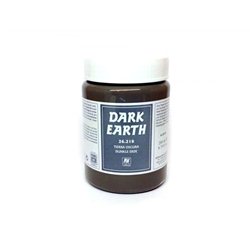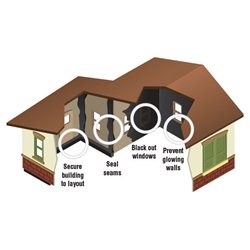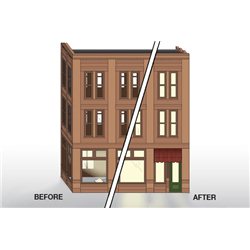Static grass puffer bottles work by manually charging model grass fibres with static electricity. When the charged...
No products
Product successfully added to your shopping cart
There are 0 items in your cart. There is 1 item in your cart.
Search Tips
How can I stop light shining through wall joints or the base of a building?
There are several ways to overcome the problem of lights shining through narrow gaps around the base of a model building.
In this case, it is good practice to test buildings for light leakage before securing them in place. One option for the prevention of leakage may be to line the inside of the model with paper, especially around corners or the joins of walls or outbuildings. Another option is to use a light-blocking material such as black electrical tape or foam board to cover the gaps. This will help to block the light from shining through and reduce the visibility of the gaps.
Another option may be to use a baseboard with a higher edge that extends up around the sides of the model building. This can help to block the light from shining through the gaps and also create a more cohesive and realistic appearance for the model. Another trick may be to use the topography of the layout to mask any leakage, such as the planting of trees or shrubs, the careful positioning of an earth bank or compost heap or the close positioning of another outbuilding such as a shed or coal bunker. This may not always hide gaps around the base of the building so the use of a modelling paste such as Vallejo's Earth texture range can be easily used to plug any gaps at ground level and can easily be overpainted to blend it into the layout.
If the light-blocking material is not an option, you can try using a light-diffusing material such as frosted acrylic or white tissue paper to cover the gaps. This will help to scatter the light and reduce the visibility of the gaps. Another option is to try using a different light source that produces less intense or focused light. This can help to reduce the visibility of the gaps and create a more even lighting effect for the model.
Finally, you can try repositioning the light source to a different angle or distance from the model. This can help to reduce the visibility of the gaps and create a more realistic lighting effect for the model.
Click here to receive the tips weekly in your mailbox. You can unsubscribe at any time.










